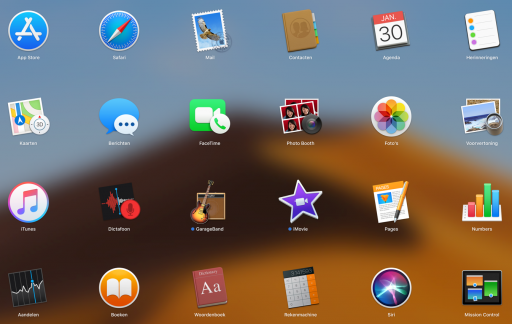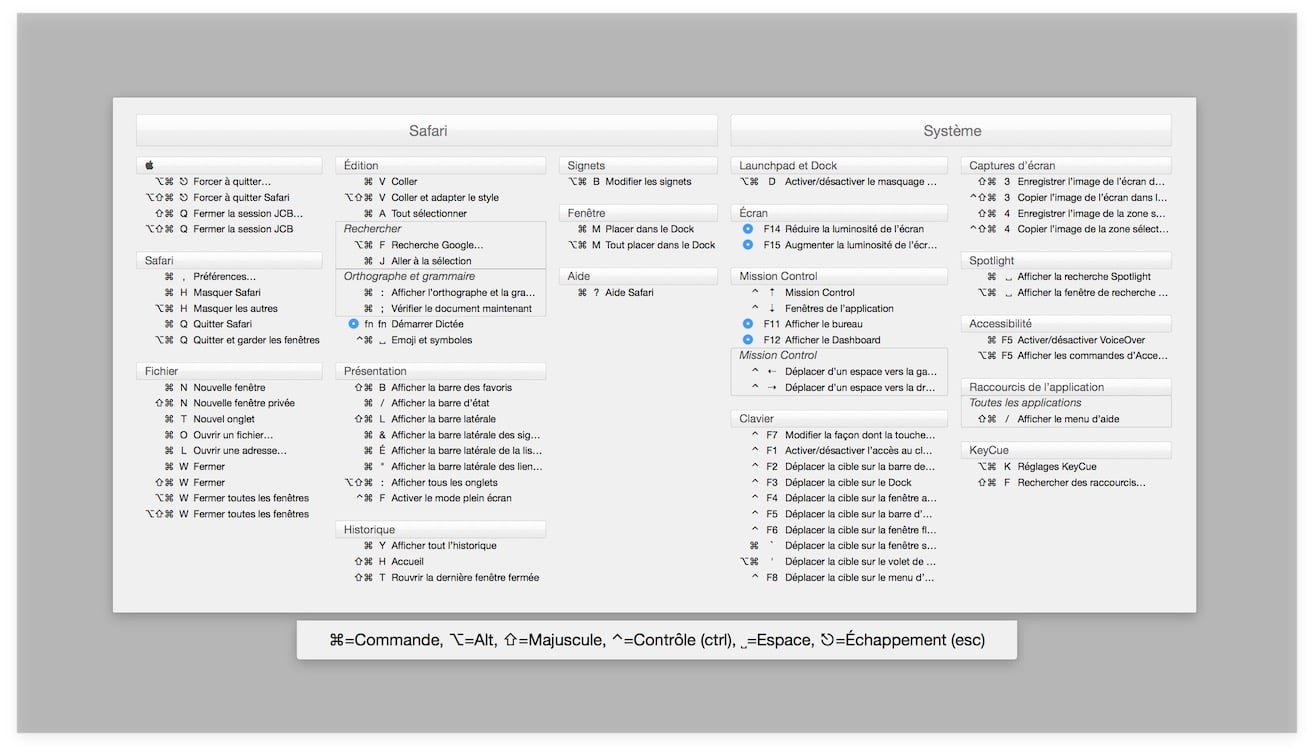Sep 12, 2018 iOS apps come to MacOS 10.14 Mojave. The first four iOS apps to make the jump from the iOS app store to the Mac should be familiar to iPhone and iPad users.
- Macos 10.14 Ios Apps Download
- Macos 10.14 Ios Apps Update
- Macos 10.14 Ios Apps Free
- Macos 10.15 Ios App
Apple has been in the tenth iteration of Mac OS since 2001, but while the name has changed from Mac OS X to macOS and the version number has crept up over the years, the core of the operating system stayed the same. Over its lifetime, Apple has made considerable improvements to the performance, security, and functionality of the software, making it one of the most robust and user-friendly operating systems around.
● Operating System for Mac and MacBook
● Started as macOS in 1984
● Mac OS X shipped March 2001
● Unix-based OS
● Major releases originally named after big cats
● Now generations named after California locations
Apple's macOS is the operating system that runs on the company's Mac and MacBook range of devices. The software, which is free to update for all Mac and MacBook owners, handles the running of applications and controls hardware that attaches to the computer.
Designed by Apple for its own systems, macOS is made to run as optimally as possible on the hardware the company sells. It also connects to Apple's online services, including the Mac App Store, Apple Music, iCloud, and other entities, and has considerable security protections to keep the users and their data safe from harm.
Based on Unix at its core, macOS is flexible enough to be extremely configurable by power users, such as via Terminal commands, and is also capable of being used for server-based applications rather than for traditional desktop use.
The operating system known currently as macOS started life as Mac OS, which was launched in 1984. Considered to be the classic Mac OS, it underwent multiple major releases until its final version, Mac OS 9, shipped in 1999. Oe cake download mac free.

Apple changed its policy with the launch of Mac OS X, colloquially known as OS X, in March 2001. Since that release, Apple has kept the major version number at 10, instead using the following minor number to indicate main upgrade releases, such as version 10.1, 10.2, and 10.3.
In 2016, Apple altered how it referred to the operating system once again, switching to macOS to match the naming pattern of its other operating systems, including iOS, tvOS, and watchOS. The version numbers continued from the previous release as usual.
Mac os x music notation software online. The structure of musicnotation,. The MusicNotation Library,Handling MIDIProgrammingMIDI means MusicalInterface Digital Instrument. Handling audio programming,.
AudiomackIf you want to know that the music you’re downloading isn’t going to be infringing on any copyright, and you are also open to checking out emerging talent in the Hip-Hop, Electronic and Reggae arenas, then give a try. Note that in order to download SoundCloud tracks you’ll need to go to SoundCloud after installing KeepVid, select the track you want, tap the “Share” icon, then select KeepVid in the options. Music downloader for android 2017 free. This app gives a platform to artists without official distribution outlets while still having a content-filtering system in place to make sure that the stuff on there is of good quality. That aside, it’s a great option.

This has led to the modern-day naming of the operating system as taking up three digits in patches following the annual major release, to indicate patches instead of feature updates. For example, the first patch after the milestone release of macOS 10.15 was macOS 10.15.1.
As well as the official name and version number, Apple has also altered the release title for each over time.
From the release of Mac OS X 10.0 Cheetah until OS X 10.8 Mountain Lion, Apple referred to the operating system by the name of a big cat. From OS X 10.9 Mavericks, Apple switched the naming convention to refer to places in California and has continued to do so since then.
Bandicam mac os download. Apple finally relinquished its 19 year naming scheme and took macOS to 11 with its release of macOS Big Sur in 2020.
macOS 11 Big Sur
Apple announced macOS Big Sur at its all-digital WWDC conference in June 2020. The operating system was redesigned with new textured icons, colorful sidebars, and more transparent and curvy elements all around. The design changes make the Mac look much closer to iPadOS than ever before.
Safari was updated with more privacy and security protections built in. Apple has made third-party extensions work with Safari even if they were built for chrome. The ability to translate webpages is now a built-in function and works totally on device.
Messages is now built with Mac Catalyst and has feature parity with its iOS counterpart. Users can send message effects, Tapbacks, and tag users in a group chat just like in iOS 14.
Apple revealed its plans to move Mac away from Intel chips to custom Apple Silicon. All iOS and iPadOS will run natively on Apple Silicon, and developers can easily upgrade their existing apps to be more Mac-like with Mac Catalyst. The new Mac computers will run Rosetta 2 and virtualization to help users and developers transition away from their Intel apps.

Released on October 7, 2019, macOS 10.15 Catalina introduced significant improvements to app handling.
A major change in Catalina was Apple's decision to end support for 32-bit apps, requiring developers to rework their apps into 64-bit versions in order to continue functioning properly. Not all developers elected to migrate their apps, forcing some users to avoid upgrading to Catalina.
Music Studio is the best tool if you're a DJ, music producer or a simple music lover who want to create their own songs. Music studio for android download.
Another chief change is the removal of iTunes, in favor of new apps that replace the majority of its functions. New apps for Apple Music, Apple Podcasts, and Apple TV offer the core functions of iTunes, while iOS device backup duties were transferred to the Finder.
10.15.1 introduced new emoji, support for the AirPods Pro, AMD Navi RDNA graphics cards in eGPU enclosures, alteration to the Photos app, and an option to opt in to Siri reviews.
10.15.2 made refinements to the Apple News, Stocks, Photos, Mail, and other apps, as well as fixes for issues in the Photos and Mail apps.
https://greatmasters545.weebly.com/blog/download-cooking-mama-kills-animals. 10.15.3 improved multi-stream video editing performance for HEVC and H.264-encoded video on the 16-inch MacBook Pro, along with Pro Display XDR optimizations.
10.15.4 added improved support for HDR-compatible monitors and added reference modes for the Pro Display XDR.
Macos 10.14 Ios Apps Download
Out on September 24, 2018, macOS 10.14 Mojave's main new feature was dark mode, an alternate user interface that can be switched to and from, and could even be implemented to change on a schedule via Dynamic Desktop.
Apps that have been available on iOS for some time were also ported to macOS, including a News app, Stocks, Voice Memos, and Home for managing HomeKit. The initiative was part of 'Project Marzipan,' to enable apps developed for iOS to function in macOS with few changes, with the quartet used to demonstrate the concept to users and developers. https://interactivenew726.weebly.com/vpn-hotspot-shield-download-mac.html.
On the desktop, Stacks are a way for files to be organized on the workspace, piling up similar files into grouped collections automatically. Continuity Camera allows for photographs taken on an iPhone to be instantly transferred to within an application on macOS.
10.14.1 consisted of new emoji, security enhancements and bug fixes, along with Group FaceTime.
10.14.2 largely consisted of security and bug fixes, a description matched by macOS 10.14.3.
10.14.4 added integration with the just-launched Apple News+ subscription service, in the Apple News app. Support for second-generation AirPods, Safari Autofill for MacBooks with Touch ID hardware, air quality index readings in Maps, and real-time text for phone calls made through a nearby iPhone were among the other changes. Install new software on mac.
10.14.5 was largely a maintenance update, though included fixes relating to AirPlay 2 support. 10.14.6 continued the security and bug fix theme.
Released on September 9, 2017, macOS 10.13 High Sierra featured a major change for storage, with macOS switching over to the Apple File System, APFS. Intended to take advantage of the use of Flash and SSD storage, AFPS is also built with encryption in mind, as well as enhanced security, and was designed to work with all Apple platforms, including watchOS, iOS, and tvOS devices as well as macOS.
RECENT ACTIVITY.We’ve got the multiplayer video footage out on YouTube for Halo Reach running on our SAPPHIRE NITRO+ RX590 graphics card at 1440p using the game’s maximum settings. Sapphire nitro radeon r9 380 graphics adapter user manual. Watch the full video here now: time to check your Steam gaming history - what games have you spent the most hours in this year or in total?
The addition of Metal 2 included driver optimizations that brought up to 10-times better draw call throughput for graphics work, more debugging tools, and a migrated Mac Window Server.
Other notable items include the migration of H.264 to H.265/HEVC to better work with 4K and HDR content, and faster and more power-efficient Safari with increased privacy protection such as Intelligent Tracking Prevention.
It is also the last version to support 32-bit apps 'without compromises,' with Apple continuing its push to get developers over to making 64-bit apps.
10.13.1 added 70 new emoji, a fix to a Bluetooth bug involving Apple Pay, reliability improvements to Microsoft Exchange message encryption, a Spotlight input fix, and the patching of assorted KRACK wi-fi vulnerabilities.
10.13.2 was largely a maintenance release, improving compatibility for some USB audio devices, VoiceOver navigation while viewing PDFs, and a fix for a Root account generation flaw.
10.13.3 included relatively small updates, including an issue where Messages conversations were temporarily stored out of order.
10.13.4 incorporated a warning to users if they are running 32-bit apps and the launch of official eGPU support.
10.13.5 added support for Messages in iCloud, allowing conversations to be synchronized between multiple Apple devices.
10.13.6 delivered support for AirPlay 2, along with a variety of stability and security improvements.
Available to end users on September 20, 2016, macOS 10.12 Sierra heralded the introduction of Siri on Mac, with users able to use Apple's digital assistant from the desktop. At the same time, a cross-platform clipboard synchronization with iOS was also added, along with synchronization of files to iCloud for iOS and macOS access.
An implementation of the iOS Picture in Picture feature was also brought in with the update, as well as rich Messages on par with iOS, changes to Photos, Apple Pay for the web, and auto-unlock via Apple Watch.
10.12.1 added iPhone 7 Photos compatibility fixes, Safari security enhancements, and fixes to Microsoft Office and Exchange issues, among other changes.
Macos 10.14 Ios Apps Update
10.12.2 improved the setup and reliability of Auto Unlock, Touch Bar screenshot support, and a wide variety of fixes and improvements.
10.12.3 improved automatic graphics switching on the 2016 MacBook Pro 15-inch, a fix for PDF corruption, and MacBook Pro battery drain issues in Safari.
Macos 10.14 Ios Apps Free
10.12.4 added Night Shift, new PDFKit APIs, cricket scores to Siri, and more options for iCloud Analytics.
Macos 10.15 Ios App
10.12.5 solved stuttering audio issues for USB headphones, a 'media-free' installation of the Windows 10 Creators Update using Boot Camp, and enhancements to the Mac App Store for compatibility with 'future software updates.'
10.12.6 largely consisted of a maintenance update.